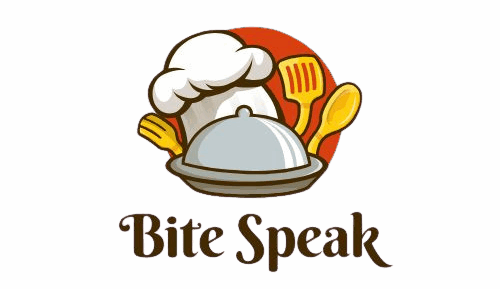20 Cheap Protein Sources That Keep You Strong Without Breaking The Bank
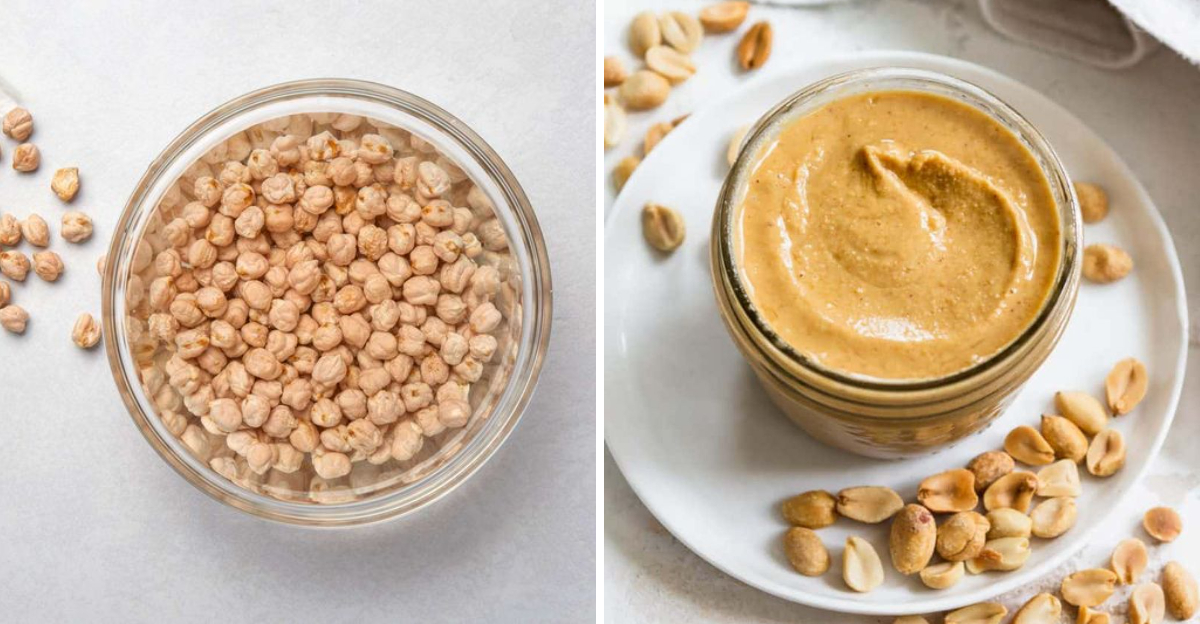
Here are 20 affordable protein sources that help fuel your body, build muscle, and support health—all without stretching your grocery budget.
1. Eggs
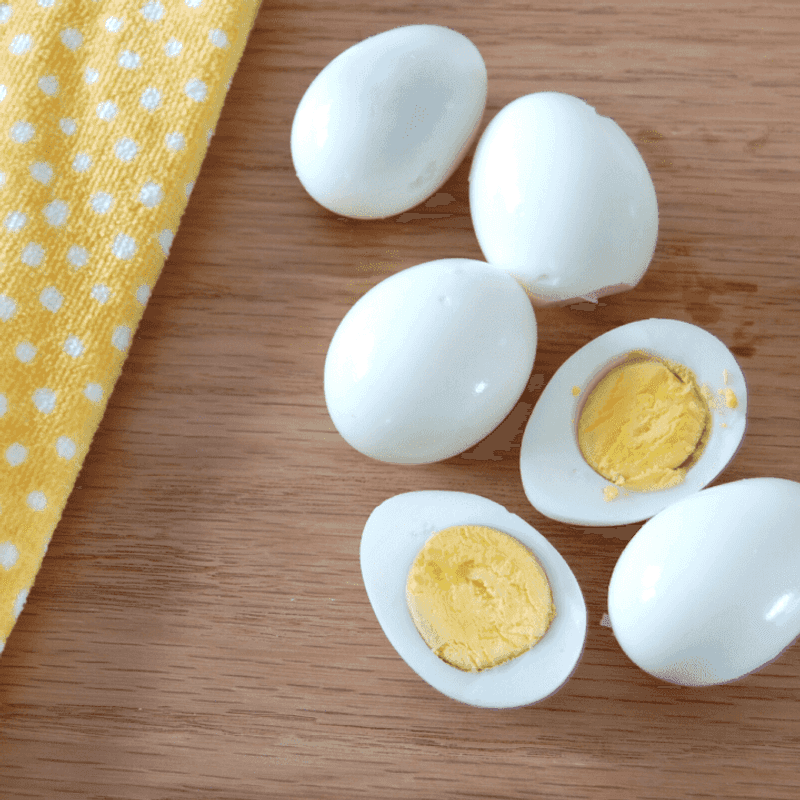
Eggs are a staple for many, providing approximately 6 grams of protein per egg. Their versatility in cooking makes them a popular choice worldwide. Whether boiled, scrambled, or poached, eggs offer a nutrient-dense option that fits perfectly in any meal. They are affordable and easy to prepare, making them a favorite among those looking to increase their protein intake without breaking the bank. Beyond protein, eggs are rich in vitamins and minerals, supporting overall health. A fun fact: the color of an egg’s shell doesn’t affect its nutritional value.
2. Canned Tuna
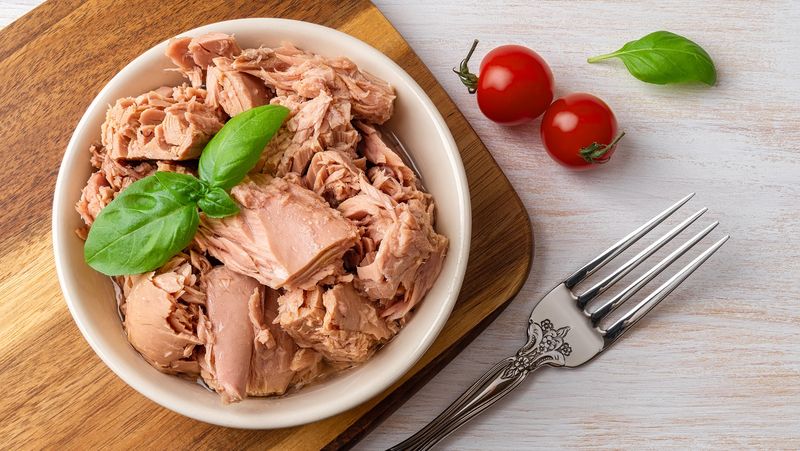
Canned tuna, a pantry hero, offers about 20 grams of protein per 3-ounce serving. Its long shelf life and convenience make it a go-to for quick, nutritious meals. Toss it into salads, mix with pasta, or simply enjoy in a sandwich. Rich in omega-3 fatty acids, canned tuna supports heart health while being budget-friendly. The history of canned tuna dates back to the early 20th century when it became a popular staple. Always opt for sustainably sourced varieties to protect our oceans while fueling your body.
3. Dry Lentils
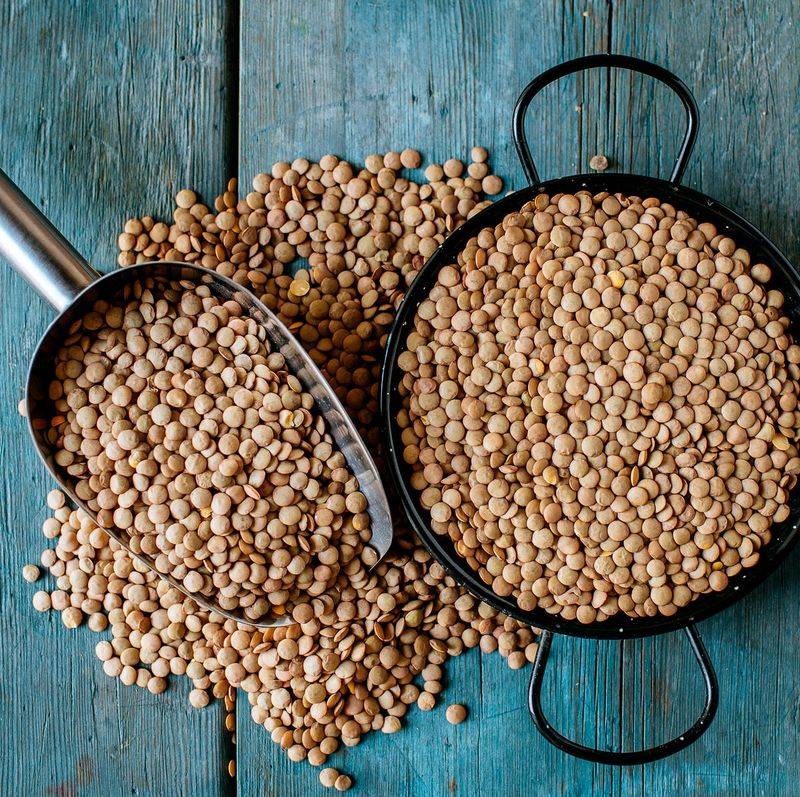
Dry lentils, a vegetarian powerhouse, provide approximately 18 grams of protein per cooked cup. These tiny legumes are not only economical but also incredibly nutritious. Packed with fiber and iron, lentils support digestion and energy levels. Their mild flavor absorbs spices beautifully, making them a versatile ingredient in soups, stews, and salads. Did you know? Lentils have been a dietary staple for thousands of years, dating back to ancient civilizations. Their enduring popularity is a testament to their health benefits and affordability.
4. Dried Beans (Black, Pinto, Navy)
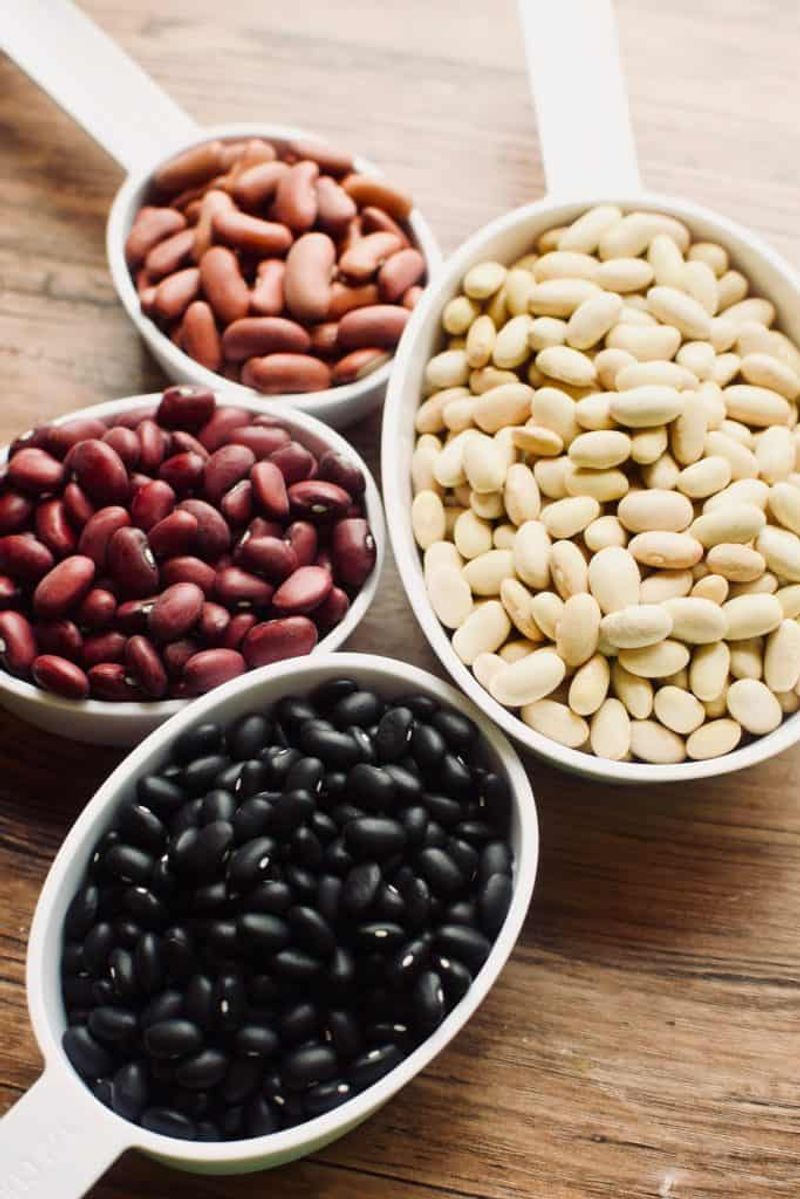
Dried beans such as black, pinto, and navy are economical sources of protein, offering over 15 grams per cooked cup. Cooking them from scratch can save money and enhance flavor. Beans are rich in fiber, aiding digestion and providing a feeling of fullness. They can be used in a plethora of dishes, from hearty stews to refreshing salads. Historically, beans have been cultivated for thousands of years, providing sustenance to various cultures. Their low cost and high nutritional value make them a staple in many diets worldwide.
5. Greek Yogurt (Plain, Nonfat)
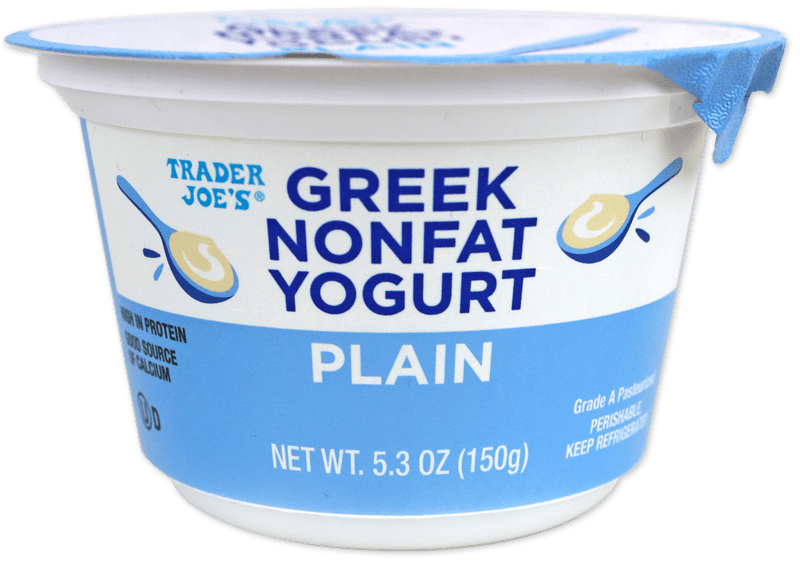
Greek yogurt, especially the plain, nonfat variety, delivers up to 20 grams of protein per cup. This creamy delight is also rich in calcium and probiotics, promoting bone and gut health. Enjoy it as a breakfast staple, dessert base, or a savory dip. Its thick, tangy texture results from straining out the whey, making it higher in protein than regular yogurt. With origins in Greece and the Middle East, it has become a global favorite. Choose unsweetened versions to avoid added sugars and maximize health benefits.
6. Cottage Cheese
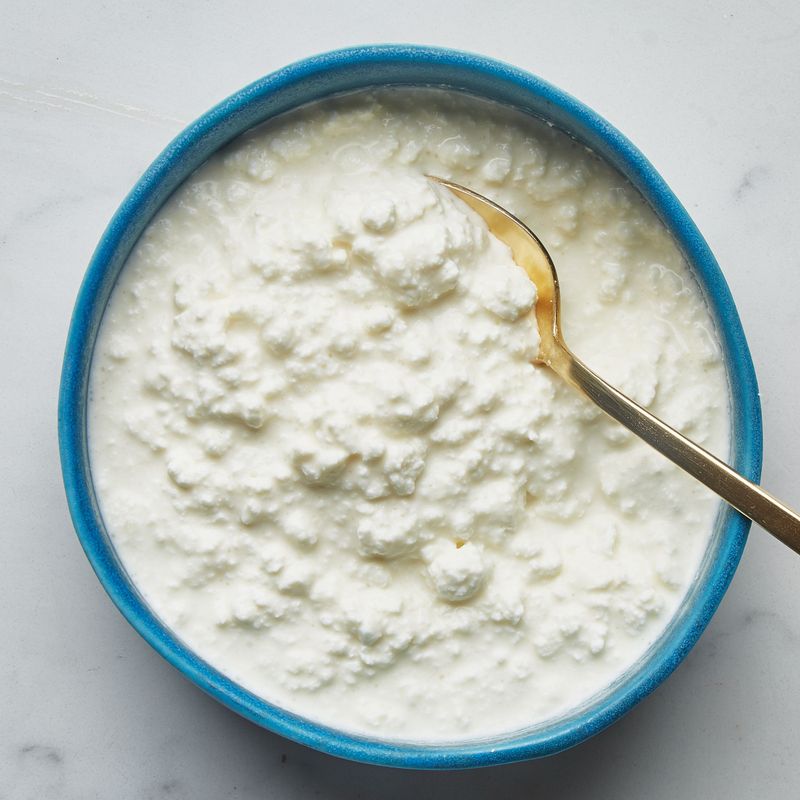
Cottage cheese, offering 12–15 grams of protein per ½ cup, is a cost-effective choice for a protein boost. Its mild flavor pairs well with both sweet and savory additions, making it versatile for any meal. High in calcium and low in fat, cottage cheese supports bone health and weight management. Its curdled texture results from the cheese-making process, giving it a unique appeal. A fun tidbit: cottage cheese was historically made in cottages from leftover milk, hence its name. It’s affordable and nutritious – a win-win!
7. Canned or Dried Chickpeas
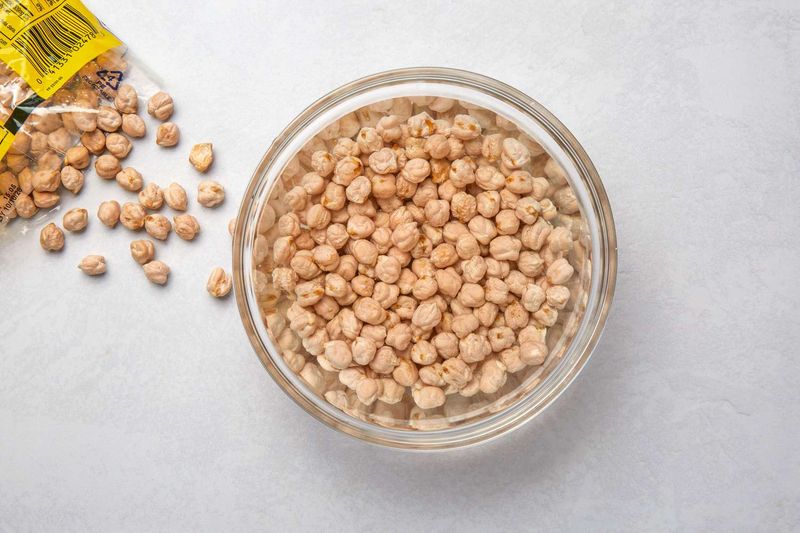
Chickpeas, whether canned or dried, offer about 14 grams of protein per cooked cup. Their affordability and versatility make them a kitchen staple. Use them in hummus, salads, or roast for a crunchy snack. Rich in fiber and essential minerals, chickpeas aid digestion and support heart health. Did you know? Chickpeas have been cultivated in the Middle East for over 7,000 years, earning a spot in various traditional dishes. Their nutty flavor and firm texture make them a favorite addition to modern recipes.
8. Tofu

Tofu, derived from soybeans, provides around 10 grams of protein per ½ cup. This plant-based marvel absorbs flavors beautifully, making it a versatile addition to stir-fries, scrambles, and smoothies. Rich in iron and calcium, tofu supports bone and heart health. Originating in ancient China, tofu has been a staple in Asian cuisines for centuries. It’s an excellent choice for vegetarians and vegans seeking protein-rich options. Try marinating it for extra flavor or crisping it up for a delightful texture contrast in dishes.
9. Peanut Butter
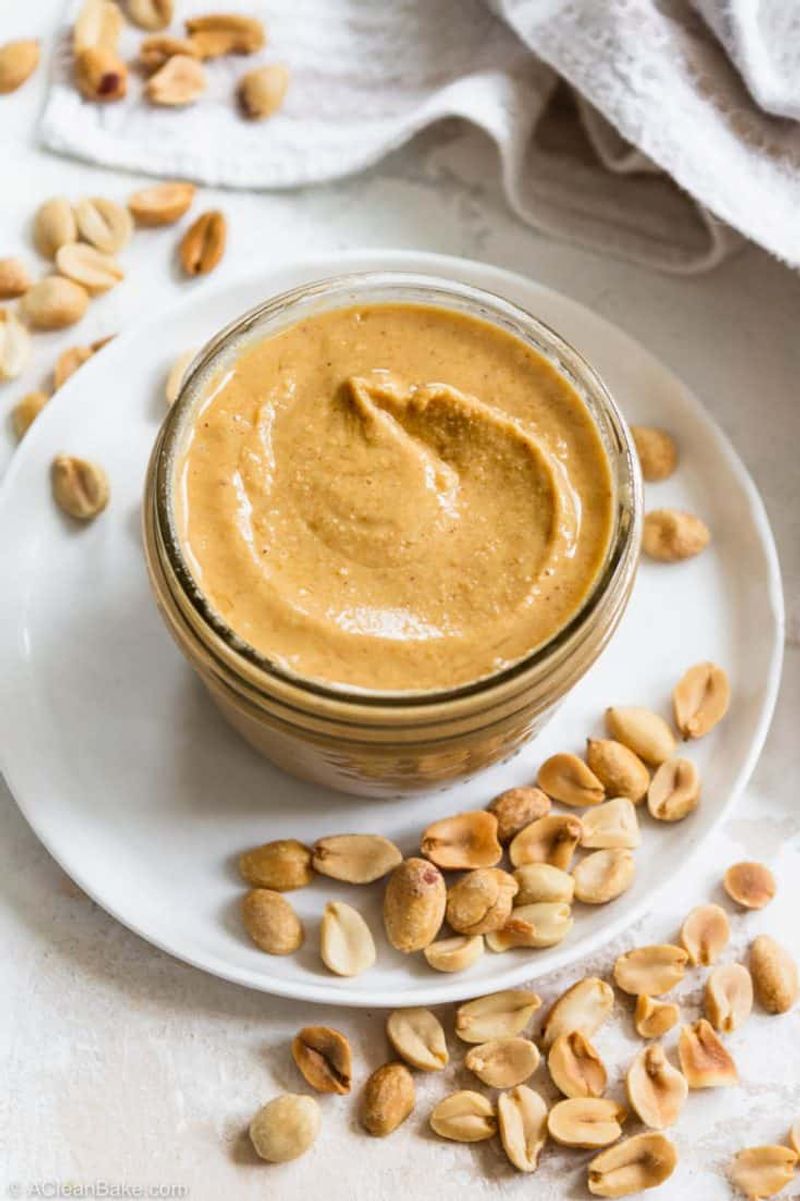
Peanut butter, a beloved pantry staple, offers 8 grams of protein per 2 tablespoons. Its rich, nutty flavor makes it a favorite spread on bread or a tasty addition to smoothies. Look for natural versions without added sugars or hydrogenated oils for maximum health benefits. Besides protein, peanut butter contains healthy fats that support heart health. Fun fact: peanut butter was first introduced at the 1893 World’s Fair. It has since become a symbol of comfort food and nutritional convenience in many households.
10. Oats
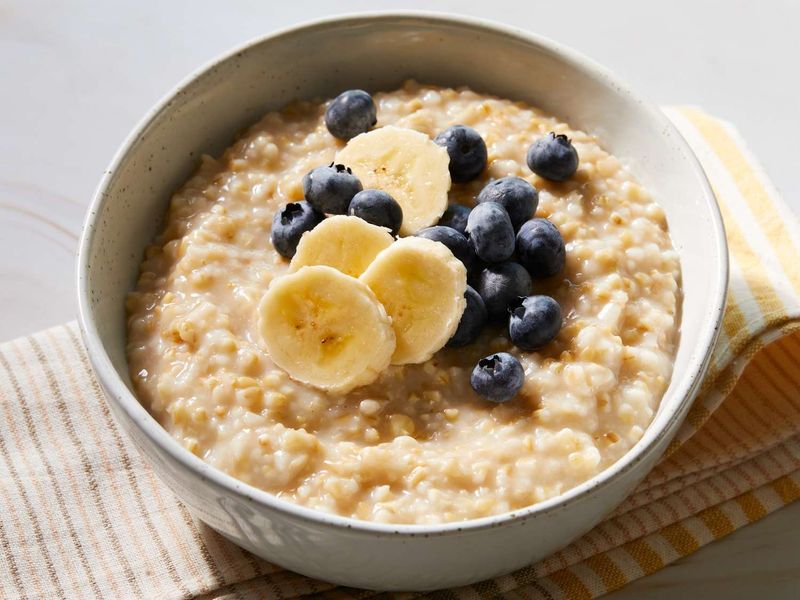
Surprisingly, oats pack 5 grams of protein per ½ cup dry. They are a hearty breakfast staple that pairs perfectly with milk, yogurt, or nut butter for an extra protein boost. Rich in fiber, oats support digestive health and provide sustained energy. Different varieties, like steel-cut or rolled, offer unique textures and cooking times. Historically, oats have been cultivated for thousands of years, primarily in Europe and North America. Their versatility and nutritional profile make them a beloved choice for health-conscious individuals.
11. Sunflower Seeds
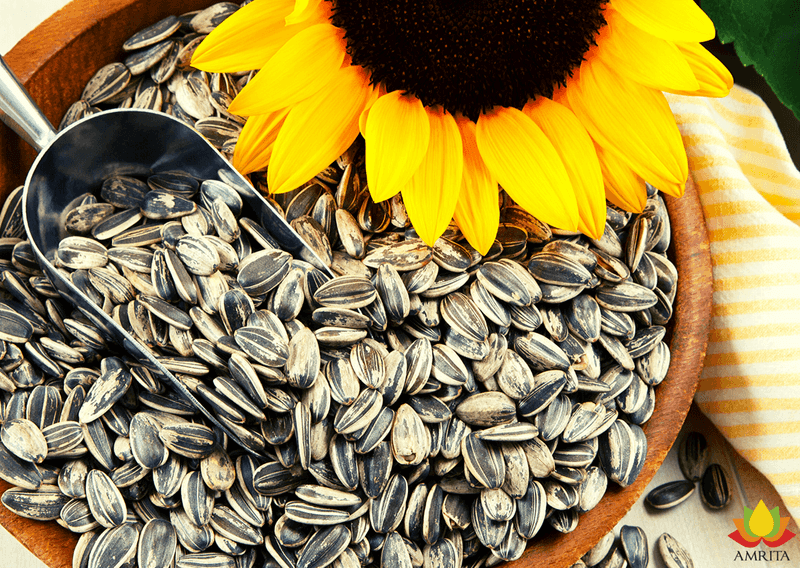
An inexpensive snack, sunflower seeds provide 6 grams of protein per ounce. They are a crunchy addition to salads, oatmeal, or trail mix. Rich in healthy fats and antioxidants, sunflower seeds support heart health and provide energy. Their cultivation dates back to ancient North America, where they were revered by indigenous peoples. Today, they remain a popular snack worldwide, appreciated for their nutritional benefits and satisfying crunch. For a fun twist, try roasting them with your favorite spices for a flavorful snack.
12. Canned Sardines
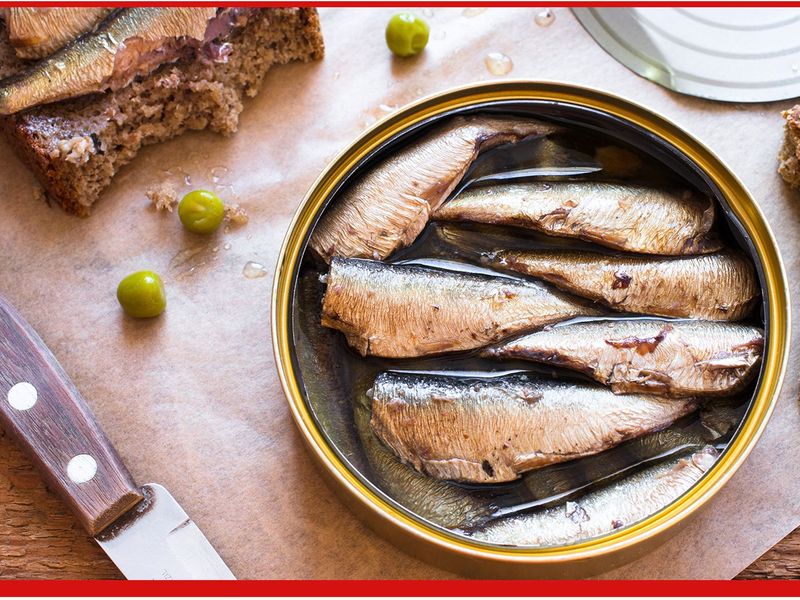
Canned sardines deliver around 22 grams of protein per 3.75 oz can. These tiny fish are not only protein-rich but also packed with calcium and omega-3 fatty acids, supporting bone and heart health. Enjoy them on toast, in salads, or straight from the can for a quick, nutritious meal. Sardines have a long history as a dietary staple, particularly in Mediterranean cuisines. Their affordable price and long shelf life make them a convenient choice for maintaining a protein-rich diet on a budget.
13. Chicken Leg Quarters

Often cheaper than chicken breasts, leg quarters offer similar protein benefits. Perfect for roasting or grilling, they provide a juicy and flavorful option for meals. A single leg quarter contains a substantial amount of protein, making it a satisfying and economical choice. Chicken has been a staple in diets worldwide, with leg quarters being prized for their taste and affordability. Marinate them for extra flavor or spice them up for a different culinary adventure, ensuring a delightful dining experience every time.
14. Brown Rice + Beans
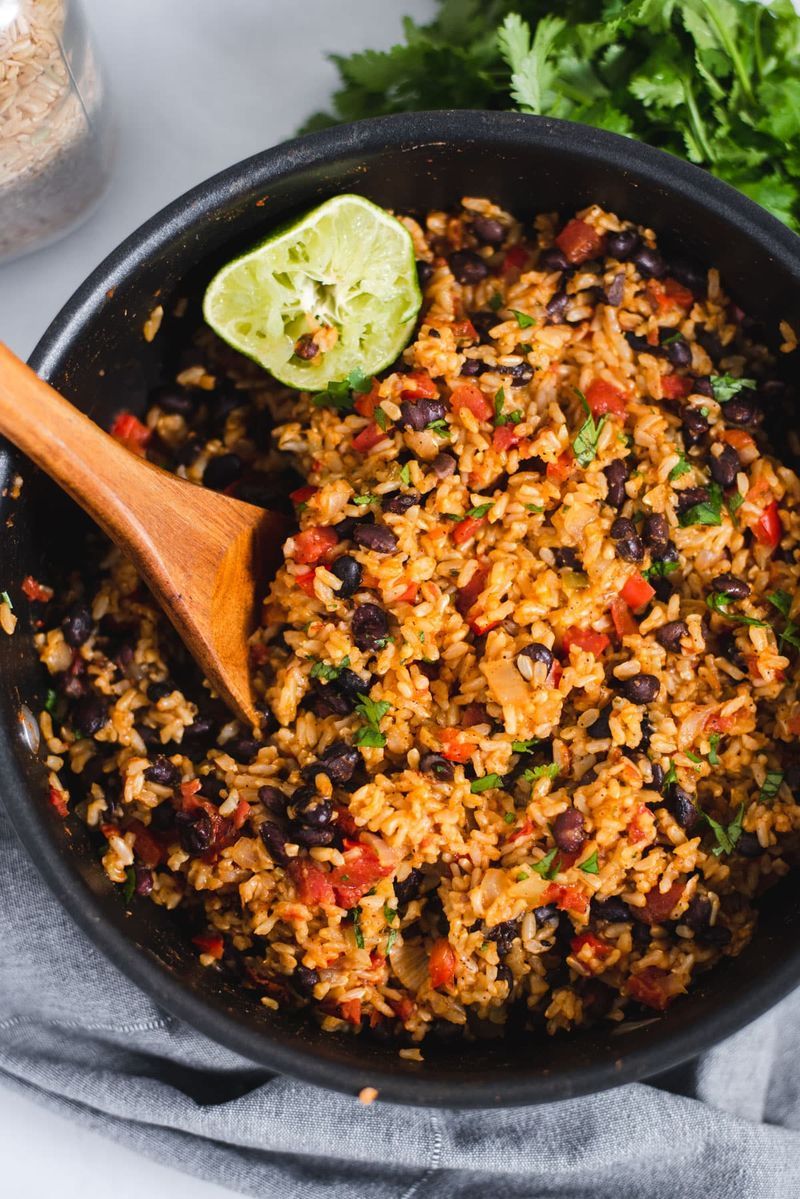
Together, brown rice and beans form a complete protein, offering 12–15 grams per serving. This classic combination is not only filling but also highly nutritious. Brown rice adds fiber, while beans provide essential amino acids, making them a perfect pair. This duo is a staple in many cuisines, from Latin American to Caribbean, celebrated for its simplicity and health benefits. Cooking them together allows the flavors to meld beautifully, creating a satisfying and wholesome meal that keeps you energized and nourished.
15. Frozen Edamame
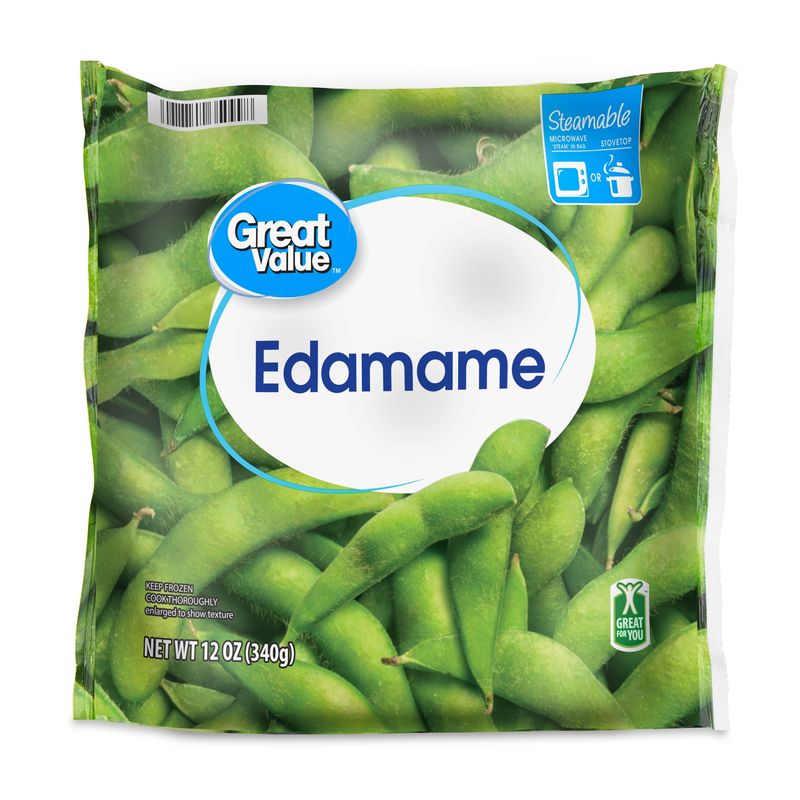
Frozen edamame, a popular snack, contains about 17 grams of protein per cooked cup. These young soybeans are rich in fiber, essential for digestive health, and packed with vitamins and minerals. Edamame has been a staple in Asian cuisines, especially in Japan, as a nutritious snack or side dish. Its mild, slightly nutty flavor makes it enjoyable on its own or as part of a dish. For a delightful treat, try seasoning them with sea salt or spices to enhance their natural taste.
16. Ground Turkey or Chicken
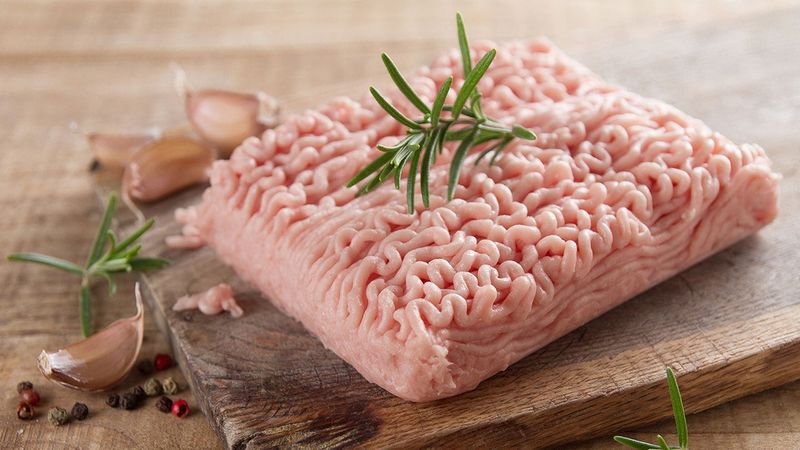
Ground turkey or chicken is a leaner alternative to beef, often more affordable per pound. Ideal for making burgers, tacos, or meatballs, it provides a substantial protein boost while being low in fat. Its mild flavor can be enhanced with various herbs and spices, making it a versatile ingredient in many dishes. Historically, turkey and chicken have been integral to various cuisines worldwide, appreciated for their health benefits and adaptability. Choose ground meat with no added fillers for the best nutritional value.
17. Canned Salmon
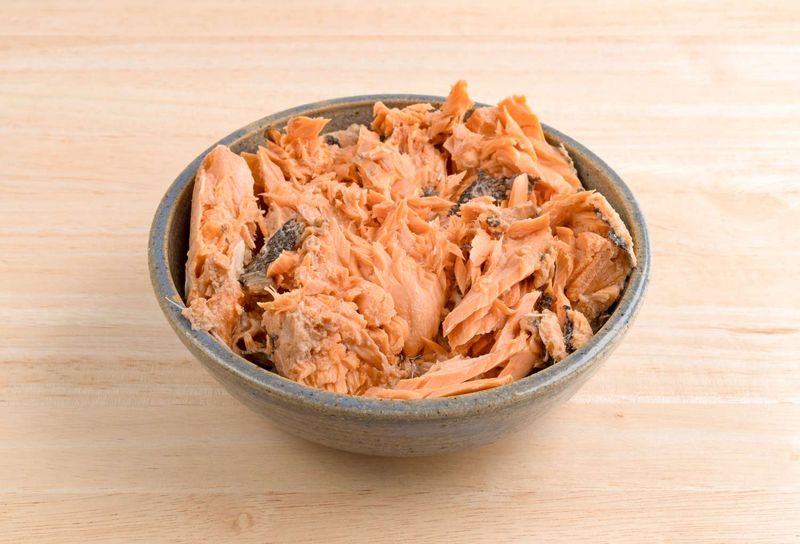
Canned salmon provides 17–20 grams of protein per serving, along with heart-healthy omega-3s and calcium from the bones. It’s a convenient, budget-friendly option for adding seafood to your diet. Enjoy it in salads, patties, or sandwiches. Salmon has been revered in many cultures for its rich flavor and nutritional benefits. Choosing wild-caught varieties ensures the best quality and environmental sustainability. Its versatility and nutrient density make canned salmon a valuable addition to any protein-conscious eater’s pantry.
18. Milk (Dairy or Fortified Plant-Based)
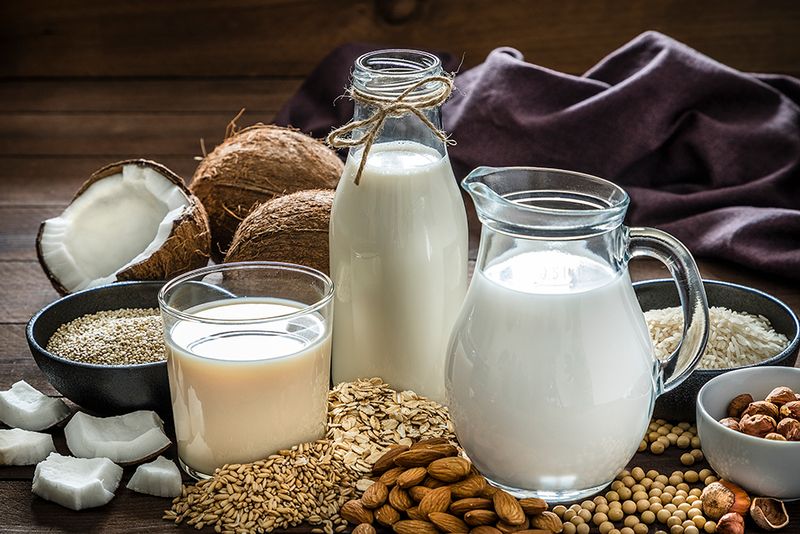
Dairy milk offers 8 grams of protein per cup, while fortified plant-based alternatives like soy milk provide similar benefits. Milk is a staple in many diets, appreciated for its calcium content, supporting bone health. Whether added to cereals, smoothies, or enjoyed on its own, milk remains a versatile beverage. Historically, milk has been central to many cultures’ diets, providing essential nutrients for growth and maintenance. Choosing fortified versions ensures plant-based options meet nutritional needs effectively, offering a healthy protein boost.
19. Seitan (Vital Wheat Gluten)
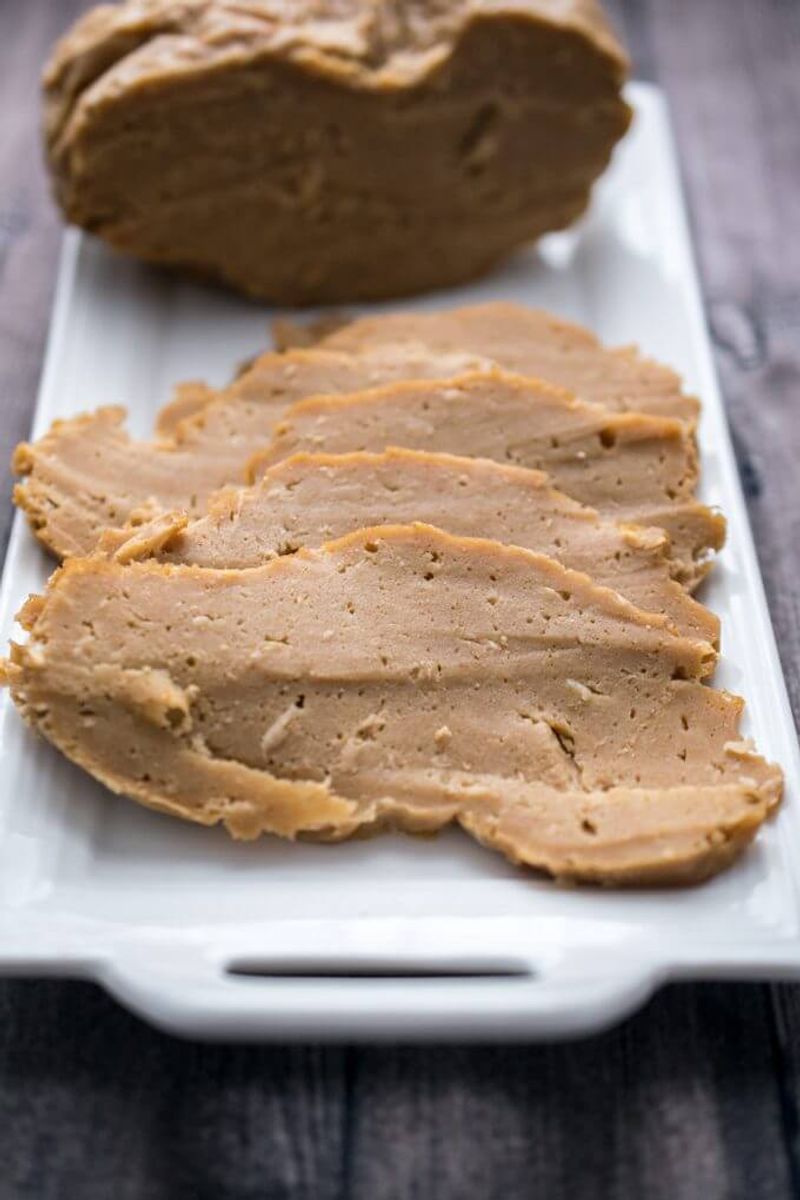
For those following plant-based diets, seitan is a protein powerhouse, providing over 20 grams per 3 oz serving. Made from wheat gluten, it mimics the texture of meat, making it a favorite among vegetarians and vegans. Seitan is versatile, absorbing flavors well in various dishes. Its origins trace back to ancient China, where it was used as a meat substitute by Buddhist monks. Making seitan at home is simple and cost-effective, allowing you to create a protein-rich addition to your meals.
20. Split Peas
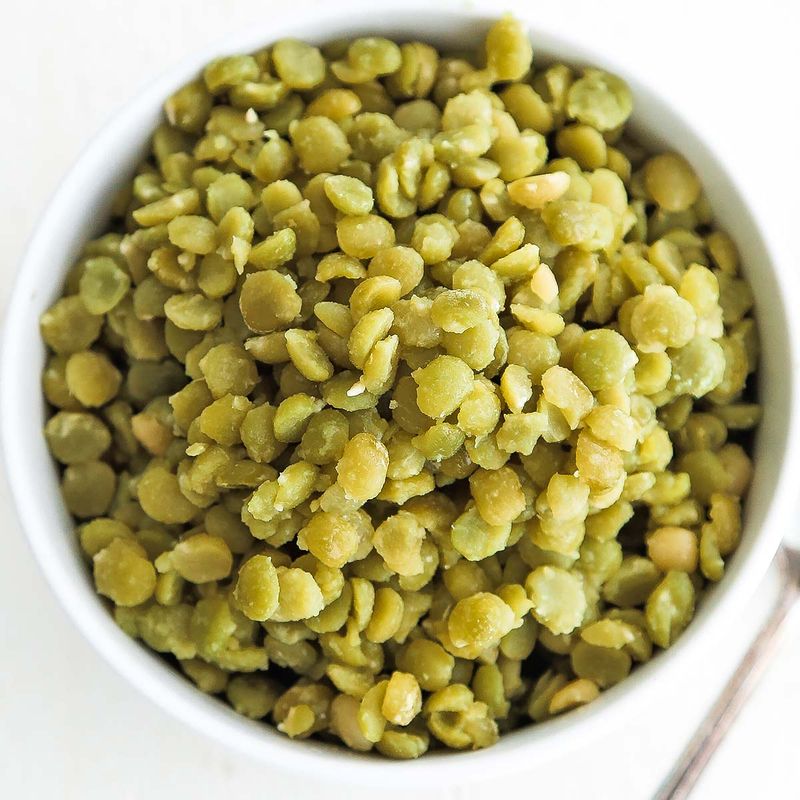
Split peas, like lentils, provide about 16 grams of protein per cooked cup. These legumes are budget-friendly and packed with nutrients, including fiber and vitamins. They are particularly popular in soups, offering a creamy texture and rich flavor. Fun fact: split pea soup has been a beloved dish since ancient times, popularized in European and Middle Eastern cuisine. Their affordability and nutritional profile make split peas an excellent choice for those seeking to boost their protein intake while enjoying hearty meals.
